Two Egyptian F-16 jets simulated an attack on HMS Albion, HMS Dragon and the Egyptian vessels El Sadat, Sharm el Sheik and the Ali Gad.
The Royal Navy say that surface attacks were also practised to ensure that the task group could operate together and its ships protect each other.
“The training concluded with a combined amphibious landing as Royal Marines landing craft from Albion formed assault waves alongside craft from the Sadat to land vehicles and troops across the Egyptian coastline.”
Albion is leading the Littoral Response Group (Experimentation) deployment, comprising destroyer HMS Dragon, amphibious support ship RFA Lyme Bay and elements of 3 Commando Brigade.
“The ships are on a three-month deployment to the Mediterranean to test the concepts, equipment and practicalities of the Future Commando Force, as well as conducting traditional exercises and operations with NATO and other allies and partners in the region.”
Albion isn’t a stranger to defending against simulated air attacks. Back in September, French Rafale jets launched an assault against Royal Navy flagship HMS Albion as her task group passed the Brittany peninsula to allow French pilots to practise their anti-ship tactics and the Royal Navy to practice defending against air attack.
“Passing Brittany brought the group well within range of the Rafales, based at Landivisiau Naval Air Station near Brest when they’re not embarked as the striking power of France’s flagship, carrier FS Charles de Gaulle.
And lifting off from Lann-Bihoué air base on the outskirts of Lorient was an E-2 Hawkeye airborne early-warning and control aircraft, which spent a few hours looking for the naval group. When the Hawkeye’s crew located the shipping, they directed the Rafales in to make their attack runs, coming in with the sun at their backs – a classic fighter tactic. As the aircraft were detected, Albion’s Combined Operations Room burst into a flurry of controlled activity. Systems hummed and headsets buzzed as sailors responded to the growing threat.
In theory Dragon and her Sea Viper missiles should take out incoming jets – or any rockets they fire – at long range. Should that fail, the task group has numerous automated Phalanx Gatling guns which spew out a supposedly-impenetrable wall of lead up to around one kilometre from each ship, decoys and, as a last resort, hand-operated machine-guns and SA80 rifles. Both sides were able to test their attacking and defensive tactics and manoeuvres during the successive waves of raids.”
More than 1,000 sailors and Royal Marines are sailing in the Mediterranean aboard amphibious assault ship HMS Albion, destroyer HMS Dragon and amphibious support ship RFA Lyme Bay.
The Royal Navy say that while deployed the ships will test the new and experimental Littoral Response Group concept (which replaces the UK’s long-standing Amphibious Task Group) and shape the Future Commando Force and evolution of the Royal Marines into a hi-tech raiding and strike force.
You can read more about the deployment of HMS Albion and her task group here.



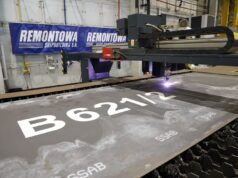
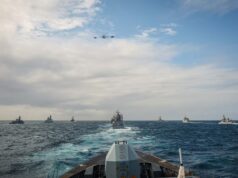

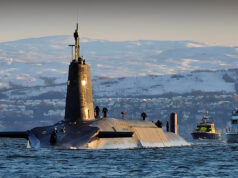

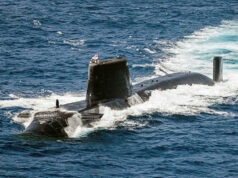

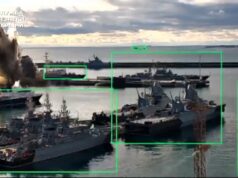
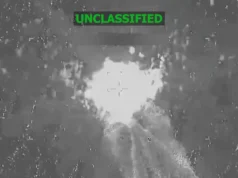
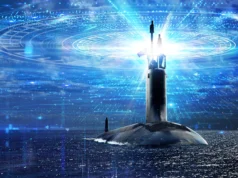

Considering the envisioned scenario, the fact that the Hawkeye spent a few hours searching bods well for a CSG likely far more clear of the coast.
The ocean is rather big, fortunately.
From above, “as a last resort, hand-operated machine-guns and SA80 rifles.”
The Russian and Chinese navies must be quaking in their bunks.
I’ve always found that a really odd thing to add to a capabilities list.
And so they should be, what crap will they be using as a last resort. A poorly trained sailor with a Kalashnikova.
It is the Falklands trauma, when the ships had worse anti aircraft defense than later WW2 destroyers.
SA80 rifles – classic
Thank god for the SA80, what would we do without it?
Originally an M16 with all that weapon’s known faults since Vietnam, the latest SA85 A3, as re-built by Heckler & Koch, works – though I doubt would be much use against jets or sea skimming missiles! The U.S. was responsible for rejecting the British 7 mm ball cartridge in the 50s and the 4.85 mm very hihj velocity counter body armour ball round in the 70s. Privatisation (sold to B.A.E. who had never built a gun ever), closure of Enfield Lock and sold for ‘development’. the rest as they say is history. A number of U.S. contemporary fire arms sites are a lot more informative on this and balanced in their assessments of this sorry mess than the ‘stuck in the record’ comments on U.K. websites one reads so often. Today the U.S. are looking at reverting to a ‘6.8’ ball round – well, fancy that!